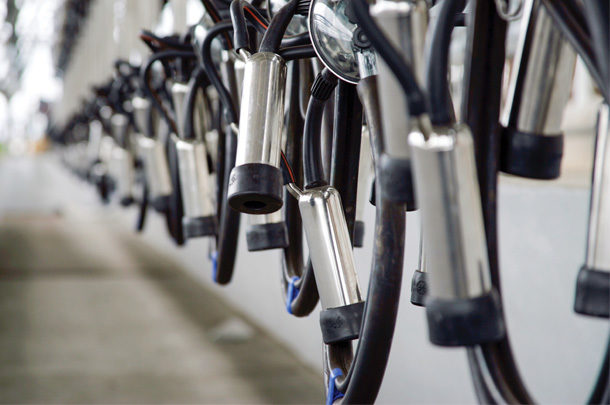“What is my somatic cell count (SCC)?” “How can I lower my SCC?” “My cell count is going up; it must be the dip.”
These are things we hear when talking and working with dairy producers, and oftentimes it is the main reason for our conversation, and rightfully so. SCC is an important aspect of being a dairy producer.
Typically, when SCC goes up, teat dip is the first place that gets examined. I will admit that some germicides and formulations are more effective than others against certain bacteria; however, there are other instances and locations on a farm that also need to be inspected and maintained to help keep your counts down. Before you call the dealer asking to switch dips, take a look at these areas first.
Parlor equipment
Look at the primary area associated with SCC. Dirty pulsators and vacuum controllers can malfunction and cause teat-end damage which, in turn, can lead to increased rates of new infections. Also, check your liners. If they are ripped or aging, they can harbor bacteria and cause teat damage. Routine inspections of the equipment do not take much time but can save you money if you spot an issue early enough.
How consistent are workers?
The workers in the parlor are sources for bacteria. Are milkers properly washing their hands, wearing clean gloves or properly cleaning manual dipping cups? Are they properly applying pre- and post-dip?
Turnover is a constant for dairy farms. With employees coming and going, it is very easy for teat dip procedures to fluctuate without anyone noticing until it’s too late. Properly training employees on the procedures and posting them can help with consistency. If there is a language barrier between managers and employees, it is best to try to bring in a trainer who can properly communicate the procedures and post the procedures in multiple languages.
The stalls
This seems straightforward: Clean the stalls. It may be labor-intensive, but it can go a long way to helping keep cows healthy. With manure, the chance of udders leaking milk, and everything else happening there, the stalls are ripe for harvesting bacteria.
Stalls should be cleaned regularly and, as an added prevention measure, should be sprayed with an EPA-registered sanitizer with registered animal premise label claims. These sanitizers undergo rigid testing and require scientific data showing they reduce or kill certain bacteria to receive these claims.
Cow comfort
Cow comfort is one of the most important things for quality milk. When cows are stressed in general it is harder to drop milk, cow flow is uneven, and stressed cows release higher levels of hormones that stifle immune function in their blood. Good cow comfort, appropriate cow handling procedures and sufficient stall space, clean water and feed space can go a long way toward reducing the stress levels.
Weather
Weather is one thing we cannot control. All we can do is prepare and adapt to its challenges. Weather can be a major contributor to elevated SCC. Rain will give bacteria the moisture it needs to grow. Humidity and heat will also contribute to bacteria growth and added stress to a herd. Proper ventilation and air flow are key to helping combat this.







